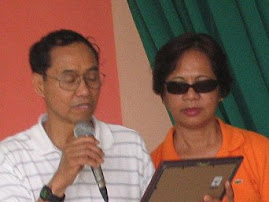MANILA, Philippines—Filipino engineers and other skilled workers who may be displaced due to the global financial crisis need not look far for overseas job prospects.
Due to the continuous boom in the mining sector, the Australian government wants to hire more foreign workers, particularly for its Australasia Pacific minerals sector, where there are skills and manpower shortages, said John Corbett, managing partner of Migration Lawyers Australia.
In a discussion on manpower issues at the 8th Asia Pacific Mining Conference and Exhibition, Corbett explained that while the United States has begun cutting jobs across industries as an offshoot of the global financial meltdown, Australian and Asean mineral producers like Indonesia and the Philippines were fortunate to be riding the "crest of the boom in mining and resources industry."
According to Corbett, this may be the "biggest and most sustained boom in living memory, based on demand from China, India and other emerging markets."
But even as the number of large-scale mining projects has been steadily increasing, Australia faces one major problem: manpower shortage.
"The problem is that there is not enough skilled labor, even for the major projects costing billions of dollars. The shortage is so acute that it is driving wages and project costs higher," he said.
He pointed out that in Australia, only 5,000 engineers graduate every year.
"The major impediment to the Australian mining industry is the global shortage of engineers, geologists, trades people," he noted.
Aside from engineers, Corbett said Australia also has a big demand for other personnel such as geologists, metallurgists, truck operators and, surprisingly, hairdressers.
Corbett added that the labor shortage in Australia has also opened more business opportunities for mining contractors from Asean countries.
He explained that some mining projects have now decided to break down the construction of facilities into modular units that contractors can build offshore. These prefabricated units are shipped to Australia and assembled at the mining sites.
For those interested in migrating, Corbett said that the "fly in, fly out" scheme was becoming a more popular solution. For instance, a company may have employees living in New Zealand but working in Australia, he explained.
Corbett lamented that most mining projects are usually located in remote and isolated areas, making it difficult to attract and keep skilled workers.
Labor requirements in the mining sector are also cyclic as they depend on the stage of the project, thus making the "fly in, fly out" operations more feasible.
Corbett said applicants who are under 45 years of age, speak English competently and are willing to migrate to isolated areas (virtually anywhere outside Sydney) can easily land a job in the country.



















No comments:
Post a Comment